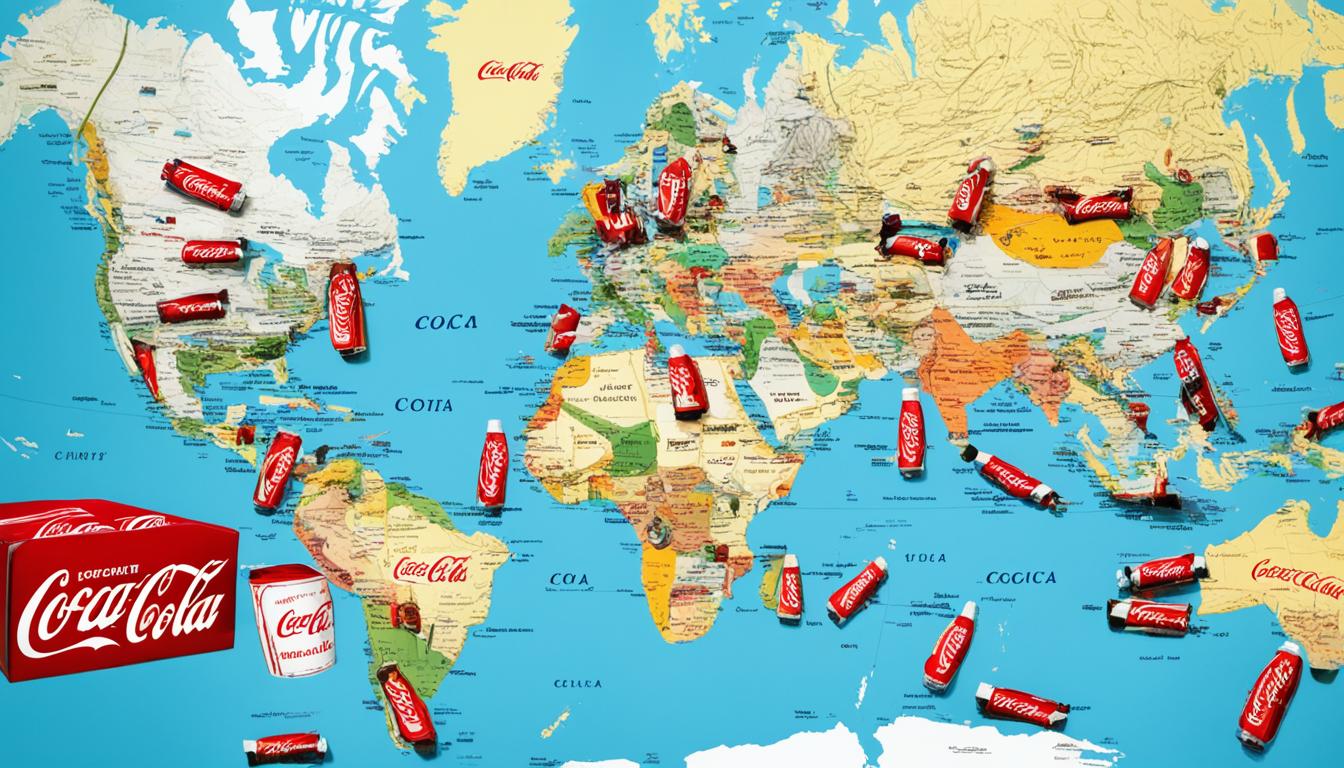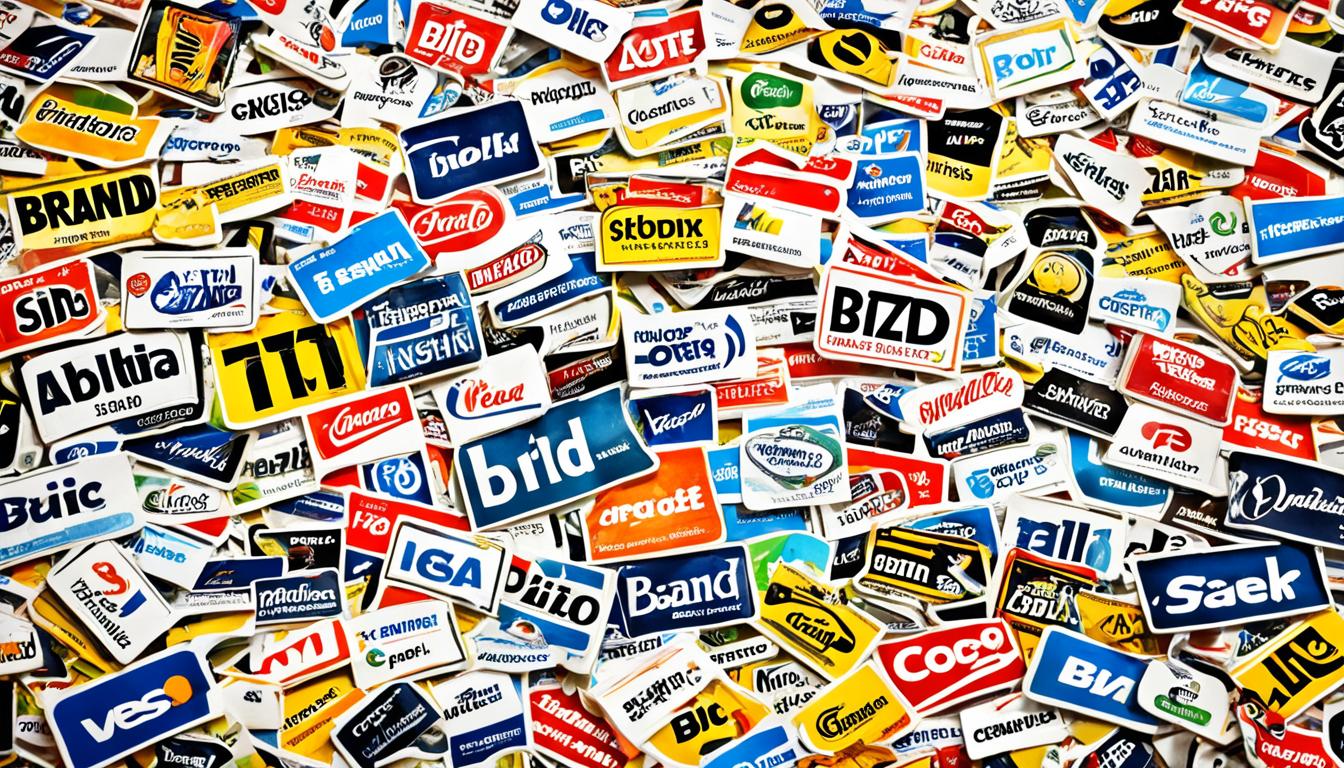Retail marketing is a fundamental aspect of any successful business strategy, encompassing all the activities that retailers use to promote their products and drive sales. It involves a combination of offline and online tactics, such as in-store marketing, digital marketing, and traditional marketing.
With the increasingly competitive retail landscape, it has become crucial for businesses to implement effective retail marketing strategies. These strategies not only increase brand recognition but also nurture customer loyalty and create emotional bonds with customers. By employing a holistic retail marketing approach, businesses can maximize their reach and boost profitability.
Key Takeaways:
- Retail marketing encompasses all the activities that retailers use to promote their products and increase sales.
- It includes both offline and online tactics, such as in-store marketing, digital marketing, and traditional marketing.
- Retail marketing is essential for businesses to increase brand recognition, nurture customer loyalty, and create emotional bonds with customers.
The Importance of Retail Marketing
Retail marketing plays a crucial role in driving sales and profitability for businesses. It is vital for retailers to understand the importance of effective marketing techniques to attract and retain customers, increase revenue, and strengthen branding. By implementing various strategies, retailers can maximize their marketing efforts and achieve success in the competitive retail industry.
Building Customer Loyalty
One of the primary goals of retail marketing is to build customer loyalty. By focusing on customer satisfaction and developing strong relationships, retailers can encourage repeat business and create brand advocates. Implementing customer feedback requests can help gather valuable insights and improve the overall shopping experience. Additionally, loyalty programs, such as reward points or exclusive discounts for frequent customers, can incentivize repeat purchases and foster loyalty.
Increasing Revenue
Effective retail marketing techniques can significantly impact a retailer’s revenue. By analyzing customer data and behavior, retailers can tailor their marketing campaigns to target specific customer segments. Targeted marketing campaigns, such as personalized email promotions or social media advertising, can increase the likelihood of customers making a purchase. Offering limited-time discounts or promotions can also create a sense of urgency and drive immediate sales.
Strengthening Branding
Successful retail marketing helps retailers establish and strengthen their brand identity. Consistency in messaging, visuals, and customer experience across different marketing channels can enhance brand recognition and loyalty. By aligning marketing efforts with the brand values and positioning, retailers can create emotional connections with their target market. This emotional bond can lead to long-term customer loyalty and differentiation from competitors.
Retail Marketing Examples
There are various retail marketing examples that showcase effective strategies in action. In-store promotions, such as limited-time sales or buy-one-get-one offers, can drive foot traffic and impulse purchases. Social media advertising enables retailers to reach a wide audience and engage with potential customers. Personalized email campaigns, tailored to individual customer preferences and purchase history, can lead to higher conversion rates. Retailers who leverage these techniques effectively can gain a competitive edge in the market.
| Technique | Description | Advantages |
|---|---|---|
| In-store promotions | Offering discounts or exclusive deals within the physical store | Attracts foot traffic, increases impulse purchases |
| Social media advertising | Promoting products or services on social media platforms | Reaches a wide audience, enables targeted advertising |
| Personalized email campaigns | Sending tailored email promotions based on customer preferences | Increases conversion rates, builds customer loyalty |
Types of Retail Marketing
Retail marketing encompasses various strategies and tactics to promote products and drive sales. Different types of retail marketing include in-store marketing, digital marketing, and traditional marketing. Each type serves a specific purpose and caters to different customer preferences and behaviors.
In-Store Marketing
In-store marketing focuses on enhancing the customer experience within the physical store. It includes strategies such as:
- Eye-catching displays to grab customers’ attention and showcase products
- Special promotions and discounts to encourage purchases
- Live events and product demonstrations to engage and educate customers
In-store marketing aims to create a welcoming and immersive environment that entices customers to explore and make purchases.
Digital Marketing
Digital marketing leverages online channels to reach and engage customers. Key components of digital marketing in retail include:
- Social media marketing: Utilizing platforms like Facebook, Instagram, and Twitter to connect with customers, share product updates, and run targeted advertising campaigns.
- Website optimization: Ensuring that the retail website is user-friendly, visually appealing, and optimized for search engines to drive organic traffic and conversions.
- Email marketing: Building a subscriber list and sending personalized emails with promotions, product recommendations, and customer loyalty programs.
Digital marketing allows retailers to reach a wider audience, build brand awareness, and drive online and offline sales.
Traditional Marketing
Traditional marketing encompasses offline tactics that have been used by retailers for decades. Examples of traditional marketing strategies include:
- Direct mailers: Sending physical mailers to target customers with promotional offers and product information.
- Newspaper ads: Placing advertisements in local or national newspapers to reach a wider audience.
- Event marketing: Hosting or participating in events to showcase products and engage with potential customers.
Traditional marketing tactics can still be effective in reaching specific demographics and local communities.
<!–
| Types of Retail Marketing | Description |
|---|---|
| In-Store Marketing | Enhancing the customer experience within the physical store through displays, promotions, and live events. |
| Digital Marketing | Utilizing online channels like social media, websites, and email campaigns to reach and engage customers. |
| Traditional Marketing | Offline tactics such as direct mailers, newspaper ads, and event marketing. |
–>
By combining in-store marketing, digital marketing, and traditional marketing, retailers can create a comprehensive strategy that caters to different customer preferences and effectively promotes their products or services.
Common Marketing Strategies Used by Retailers
Retailers employ a range of common marketing strategies to effectively connect with their target audience and drive sales. By understanding the customer journey, focusing on personalization, and investing in a technology platform, retailers can create impactful marketing campaigns that resonate with their customers and lead to increased brand loyalty and revenue.
Understanding the Customer Journey
An essential aspect of successful retail marketing is understanding the customer journey. This involves mapping out the various touchpoints and interactions a customer has with a brand, from initial awareness to the final purchase. By comprehending each stage of the customer journey, retailers can tailor their marketing messages and tactics to meet the specific needs and preferences of their customers at every step.
Focusing on Personalization
In today’s highly competitive retail landscape, personalization is key to capturing customer attention and fostering loyalty. Retailers can leverage technology and data analysis to gather insights about their customers’ preferences, past purchases, and behavior. Armed with this information, they can personalize their marketing efforts, providing customers with tailored recommendations, targeted promotions, and relevant content that speaks directly to their interests and needs.
Investing in a Technology Platform
To effectively implement modern marketing strategies, retailers must invest in a robust and flexible technology platform. A technology platform allows retailers to centralize their customer data, streamline marketing workflows, and automate personalized communications. Additionally, it enables retailers to track and analyze the effectiveness of their marketing campaigns, helping them refine their strategies and optimize their resources for maximum impact.
By adopting common marketing strategies such as understanding the customer journey, focusing on personalization, and investing in a technology platform, retailers can create a seamless and engaging customer experience that ultimately boosts sales and nurtures long-term customer relationships.
The Retail Marketing Mix: The Six Ps
The retail marketing mix consists of the traditional four Ps of marketing and adds two more to create a comprehensive framework for retail marketing strategy. These elements are crucial for retailers to effectively promote their products and drive sales. Let’s explore each of the six Ps in detail:
Product
The product is at the core of the retail marketing mix. It refers to the item or service being sold to customers. Retailers must carefully curate their product offerings to meet the needs and preferences of their target audience. This involves considering factors such as product quality, design, features, and packaging.
Price
Pricing is a vital aspect of retail marketing. It determines the cost of the product to the customer and plays a significant role in influencing purchasing decisions. Retailers must strategically set their prices to ensure profitability while remaining competitive in the market. Factors to consider when determining the price include production costs, competitor pricing, and customer perceptions of value.
Place
Place refers to the locations where customers can purchase the product. It involves decisions regarding the distribution channels and retail outlets that will carry the product. Retailers must carefully consider factors such as the target market’s preferred shopping locations, accessibility, and convenience when selecting the appropriate places to sell their products.
Promotion
Promotion encompasses the marketing activities used to generate interest and drive sales. This includes advertising, public relations, sales promotions, and other promotional methods. Retailers must develop effective promotional strategies that resonate with their target audience and communicate the unique value proposition of their products.
People
The people element of the retail marketing mix focuses on the individuals who represent the retail brand and interact with customers. This includes sales associates, customer service representatives, and other staff members. Retailers must invest in hiring and training employees who exemplify exceptional customer service and embody the brand’s values.
Presentation
Presentation refers to the visual and experiential aspects of the retail setting. It involves creating an appealing and immersive environment for customers, both online and offline. Presentation elements include store layout, displays, signage, and overall ambiance. Retailers must carefully design their presentation to create a positive and memorable shopping experience for customers.
Curb Appeal and In-Store Visual Merchandising
Curb appeal is a critical aspect of attracting customers to a retail store. It encompasses various elements, including signage and window displays, that create an enticing first impression. By utilizing effective visual merchandising techniques, retailers can enhance the shopping experience and drive sales.
Retail displays play a significant role in capturing customers’ attention and influencing their purchasing decisions. Organizing displays strategically allows retailers to showcase their products in an appealing and organized manner. By curating product arrangements that are visually appealing and easy to navigate, retailers can guide customers through the store and encourage exploration.
Visual merchandising involves designing the store layout, selecting the right colors and materials, and creating eye-catching displays. The use of a cohesive color palette and visually appealing signage can create a memorable brand image and reinforce the store’s identity. Retailers can also leverage music and interactive displays to engage customers and create an immersive shopping experience.
Take a look at the example below to see how an effective retail display can enhance curb appeal and attract customers:
| Before | After |
|---|---|
| A cluttered display with products haphazardly arranged. | A well-organized display that showcases products and promotes easy browsing. |
| Products are difficult to find. | Products are categorized and clearly labeled, making it easy for customers to locate what they need. |
| Poor lighting and unappealing aesthetics. | Attractive lighting and visually pleasing elements that create a welcoming ambiance. |
By investing in curb appeal and employing effective visual merchandising strategies, retailers can create a visually appealing and engaging in-store environment that attracts customers and drives sales.
Building an Online Presence and Local SEO
Building a strong online presence is essential for retailers to extend their reach and increase sales both online and offline. By leveraging various digital marketing channels and implementing effective search engine optimization (SEO) strategies, retailers can connect with their target audience and enhance their brand awareness.
Digital Marketing Channels
Digital marketing offers a multitude of channels that retailers can utilize to engage with customers and promote their products. These channels include:
- Social media: Social media platforms like Facebook, Instagram, and Twitter provide an opportunity to build an online community, share engaging content, and interact with customers directly.
- Email marketing: Email campaigns allow retailers to maintain regular communication with their customer base, share personalized offers, and drive traffic to their online store.
- Content marketing: Creating valuable and informative content, such as blog posts or videos, can help retailers establish authority in their industry and attract potential customers.
Search Engine Optimization (SEO)
Implementing effective SEO strategies is crucial for retailers to ensure their online presence is easily discoverable by potential customers. Local SEO, in particular, focuses on optimizing visibility for a specific area, making it easier for local customers to find and engage with the retail store. Some key aspects of SEO include:
- Keyword research: Identifying relevant keywords related to the retail store’s products or services helps improve search engine rankings and attract targeted traffic.
- On-page optimization: Optimizing website elements like meta tags, headings, and content structure ensures search engines can understand and index the website effectively.
- Local citations and directories: Listing the retail store’s business information on various online directories and local citation websites helps improve local SEO and increases the chances of appearing in local search results.
| Digital Marketing Channels | Advantages |
|---|---|
| Social media | Allows direct interaction with customers and builds brand loyalty. |
| Email marketing | Enables personalized communication and drives traffic to the online store. |
| Content marketing | Establishes brand authority and attracts potential customers. |
By combining a strong online presence and effective local SEO strategies, retailers can maximize their visibility, attract more customers, and boost their overall sales performance.
The Role of the Retail Staff and Store Presentation
The success of a retail store relies heavily on the expertise and customer service provided by the retail staff. These dedicated professionals are the face of the brand and play a crucial role in customer interactions and sales. By delivering exceptional service and fostering positive relationships with customers, retail staff can create a memorable shopping experience that keeps customers coming back.
When it comes to customer interactions, retail staff should be knowledgeable, friendly, and attentive. They should have a deep understanding of the products and services offered by the store and be able to answer any questions or concerns that customers may have. By providing accurate and helpful information, retail staff can build trust and enhance the customer’s shopping experience.
In addition to their expertise, the retail staff should possess excellent communication skills. They must be able to actively listen to customers, understand their needs, and provide personalized recommendations or solutions. Effective communication helps establish a connection with the customer, making them feel valued and understood.
Moreover, retail staff should be trained to handle challenging situations with professionalism and empathy. Dealing with customer complaints or difficult customers requires patience, problem-solving skills, and the ability to remain calm under pressure. By addressing customer issues promptly and effectively, retail staff can turn a potentially negative experience into a positive one.
Store presentation is another vital aspect that influences customer perceptions and ultimately drives sales. A well-designed and visually appealing store creates a welcoming and cohesive brand image. Elements such as furniture, signage, and layout contribute to a pleasant ambiance and help customers navigate the store effortlessly.
Effective store presentation also involves organizing displays strategically to highlight products and promotions. Retail staff should regularly assess and maintain the store’s appearance, ensuring that shelves are well-stocked, products are neatly displayed, and the overall layout is intuitive for customers. A clean and organized store creates a positive impression and encourages customers to explore and make purchases.
To further enhance store presentation, retailers can leverage technology and multimedia elements. Interactive displays, digital signage, and engaging visuals can captivate customers and create a memorable shopping experience. By embracing innovative store presentation techniques, retailers can differentiate themselves from competitors and leave a lasting impression on customers.
In conclusion, the retail staff and store presentation are integral components of a successful retail business. By investing in training and hiring trustworthy employees, retailers can ensure exemplary customer interactions that build loyalty and drive sales. Simultaneously, careful attention to store presentation creates an appealing and cohesive brand image that influences customer perceptions. When these elements work in harmony, retailers can create a remarkable shopping experience that keeps customers coming back for more.
Conclusion
Retail marketing is a dynamic field that requires continuous adaptation to trends and consumer behavior. To succeed, retailers should adopt best practices like understanding the customer journey, personalization, and investing in the right technology platform. By understanding the customer journey, retailers can create tailored experiences that meet the needs and preferences of their target audience. Personalization allows retailers to connect with customers on a deeper level, increasing engagement and loyalty. Investing in the right technology platform enables retailers to streamline their marketing efforts and effectively measure the success of their campaigns.
It is crucial for retailers to keep up with retail marketing trends to stay competitive in the ever-evolving industry. As consumer behavior changes, retailers must adapt their strategies accordingly. By staying updated on the latest trends, retailers can implement new tactics and techniques that resonate with their target audience. Whether it’s leveraging social media platforms, embracing experiential marketing, or implementing innovative technologies, staying in tune with retail marketing trends will enable businesses to engage customers, drive sales, and maintain a competitive edge.
In conclusion, retail marketing best practices involve understanding the customer journey, personalization, and investing in the right technology platform. By keeping up with retail marketing trends, retailers can ensure their strategies remain relevant and effective in today’s dynamic market. By implementing these practices and staying ahead of emerging trends, retailers can successfully engage customers, drive sales, and thrive in the ever-evolving retail industry.







